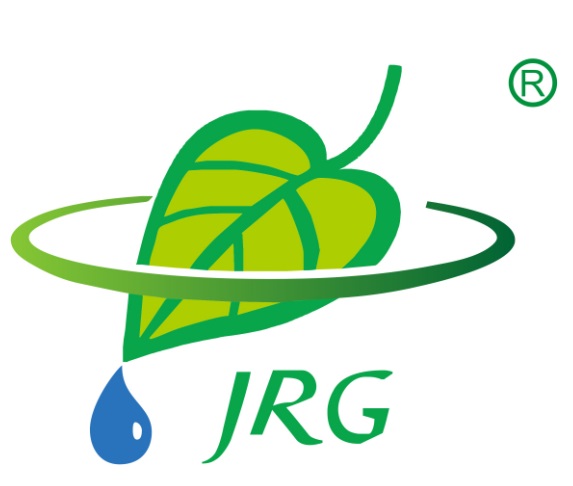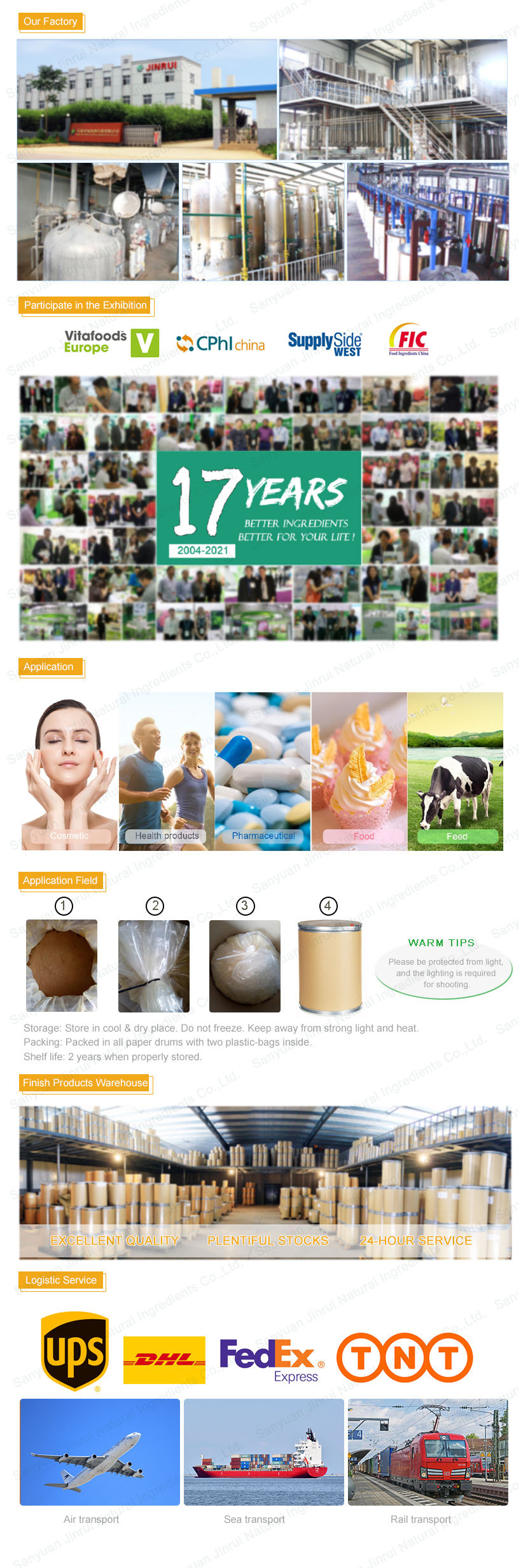
 Ten years of qualification
Ten years of qualification
 Audited Supplier
Audited Supplier
In This Store
Category:Natural Extracts > Plant Extracts
Product Name:Siberian Ginseng Extract Eleutherisides B+E ≥ 0.8
CAS No.:7374-79-0
Standard:ChP, USP, EP
Price(USD):Negotiable
Company:Sanyuan Jinrui Natural Ingredients Co.,Ltd.
Grade: food grade, pharmaceutical grade
Factory Location: (Plant 7) Zhaoshang Road, Qinghe Food Industry Park, Sanyuan, Shaanxi, China
Main Sales Markets: North America,Central/South America,Western Europe,Eastern Europe,Australasia,Asia,Middle East,Africa
Monthly Production Capacity: 10 tons
Packaging Information: Packed in all paper drums with two plastic-bags inside. N.W.: 25Kg. I.D.: 35XH53cm
Delivery Lead Time: Within 10 days
Sample Provided: yes
Payment Terms: T/T
Product Code: JRG-S-020-0.8
English Name: Siberian Ginseng Extract
Latin Name: Eleutherococcus senticosus
Used Part: Root
Active ingredient: Eleutherisides B+E
Specification: Eleutherisides B+E ≥ 0.8
Test Method: By HPLC
Appearance: Brown yellow powder
1. Introduction
Siberian Ginseng Extract is the dried roots and rhizomes of the Eleutherococcus senticosus, and it is brown powder. Main ingredients: Eleutherisides B, Eleutherisides E etc. Siberian Ginseng Extract can nourish qi, invigorate the spleen, invigorate the kidney and soothe the nerves. Used for spleen and kidney yang deficiency, physical weakness, loss of appetite, waist and knee pain, insomnia and dreaminess. Take 2-3 grams of dry, powdered roots and rhizomes every day. It is also appropriate to take 300-400mg of concentrated solid extracts with Eleutheroside B and E as the standard. Alcohol extracts can also be taken, 8-10ml divided into 2-3 times. Generally, continue taking acanthopanax for six to eight weeks, then stop taking it for one to two weeks and then resume taking it.
2. Plant source
Acanthopanax senticosus (Latin scientific name: Eleutherococcus senticosus). Shrubs, 1-6 meters high; many branches. Leaves have small leaves 5, sparse 3; petioles are often sparsely thorny, small leaves are papery, elliptical obovate or oblong, apex acuminate, base broad and wedge-shaped, rough on the top, dark green, coarse hairs on the veins, light green below , With pubescence on the veins and sharp heavy serrations on the edges; petiole with brown pubescence. Umbells are single terminal, with many flowers; total peduncle glabrous, pedicel glabrous or slightly hairy at base; flowers purple-yellow; calyx glabrous; petals ovate; ovary 5-chamber, all styles connate into columnar. The fruit is spherical or ovoid. Flowering period from June to July, fruiting period from August to October. Root bark dispels rheumatism, strengthens muscles and bones, soaks in wine to make Wujiapi wine (or make Wujiapi powder). Root bark contains volatile oil, tannins, palmitic acid, linoleic acid, vitamin A and B1. The root bark can also be used as a substitute for "Acanthopanax bark" for medicinal purposes; the seeds can be used to squeeze oil and make soap.
3. Specification
| nglish Name | Siberian Ginseng Extract |
| Latin Name | Eleutherococcus senticosus |
| Specification | Eleutherisides B+E ≥ 0.8 |
| Appearance | Brown yellow powder |
| Odor | Characteristic |
| Taste | Characteristic |
| Bulk density | 40-60g/100ml |
| Tapped density | 60-90g/100ml |
| Particle size | NLT 100% pass 80 mesh |
| Loss on drying | ≤ 5.00% |
| Residue on Ignition | ≤ 5.00% |
| Pesticides residue | Complies |
| Heavy Metals | |
| Total Heavy Metals | ≤10ppm |
| Lead | ≤3ppm |
| Arsenic | ≤1ppm |
| Mercury | ≤0.1ppm |
| Cadmium | ≤1ppm |
| Microbiology | |
| Total plate count | ≤ 1000cfu/g |
| Yeast & Mould count | ≤ 100cfu/g |
| Enterobacteriaceae (BTGN) | ≤ 100cfu/g |
| Escherichia coli | Not Detected/g |
| Salmonella species | Not Detected/10g |
| Staphylococcus aureus | Not Detected/g |
4. Function
1. Prevent diseases caused by stress;
2. Resist fatigue and restore energy;
3. Stimulate the body's immunity.
5. Application
Siberian Ginseng Extract is commonly used in the fields of food, health products, cosmetics and medicine.



Contact Us
Tel: (+86) 400 610 1188
WhatsApp/Telegram/Wechat: +86 13621645194
+86 15021993094
Follow Us:




 Pharma Sources Insight July 2025
Pharma Sources Insight July 2025


